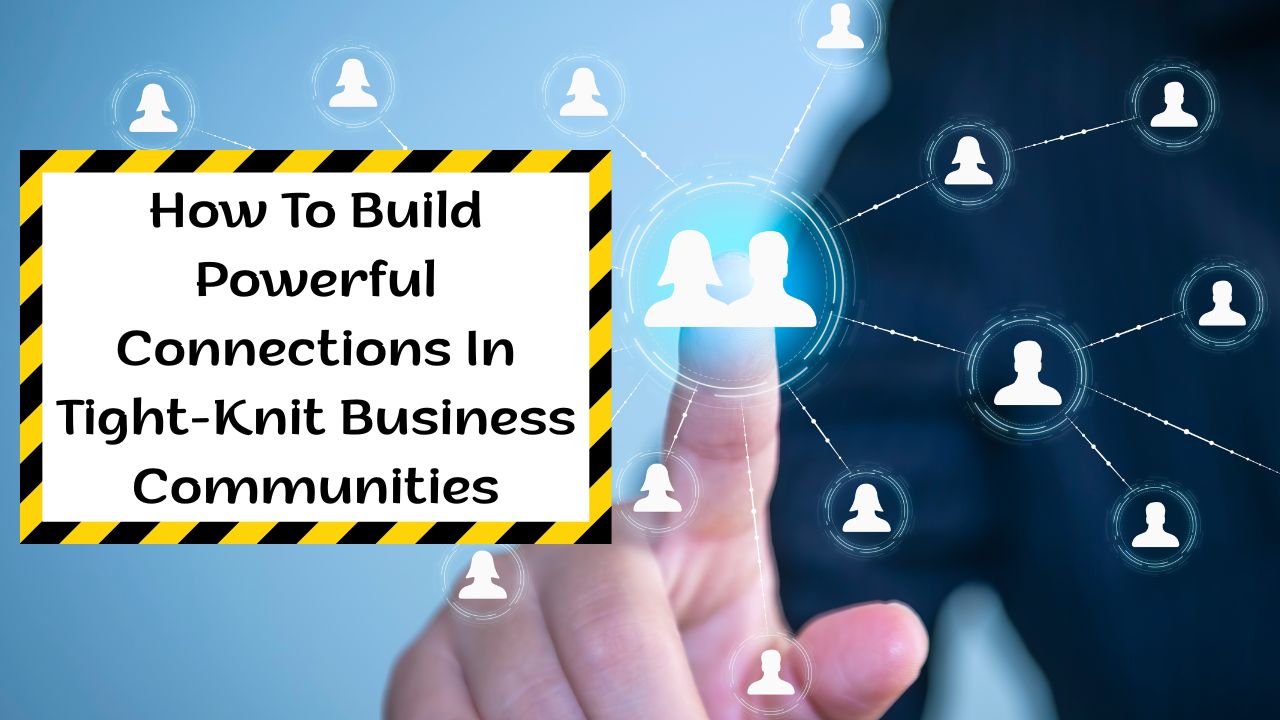Building powerful connections in tight-knit business communities is one of the most effective ways to grow a small business. In such environments, trust, visibility, and community involvement matter more than large marketing budgets.
When you’re known, respected, and seen as someone who contributes, opportunities flow naturally — from new customers to collaborations and referrals.
This detailed guide walks through practical, real-world strategies to help you strengthen your network, deepen your reputation, and build lasting partnerships in your local business ecosystem.
Why Connections Matter in Small Communities
In small or close communities, word-of-mouth is the lifeblood of success. People prefer doing business with familiar faces they trust. Every interaction — whether at a local market, networking event, or online — can turn into an opportunity.
Strong connections help you:
- Earn referrals without paid advertising.
- Collaborate with local businesses to expand reach and share resources.
- Build credibility and loyalty through authentic relationships.
- Contribute to your community, enhancing your reputation as a trusted business owner.
In short, being connected is more than networking — it’s about being part of the heartbeat of your community.
Core Networking Strategies and Their Business Impact
| Strategy | Action Step | Expected Outcome |
|---|---|---|
| Give First | Offer help, share leads, or volunteer | Builds trust and goodwill |
| Be Visible | Attend events, join local groups | Increases recognition and reliability |
| Engage Online | Participate in local digital communities | Expands presence and awareness |
| Build Relationships | Listen and connect authentically | Encourages long-term loyalty |
| Follow Up | Stay in touch regularly | Strengthens consistency and memory recall |
| Host Events | Create local meetups or workshops | Positions you as a community leader |
| Track Progress | Review what’s working | Improves focus and measurable results |
Step 1: Give First — The Foundation of Trust
The first rule in a small community: be generous before you ask for anything.
When you actively help others — whether by offering advice, sharing contacts, or volunteering — you demonstrate sincerity. This “give-first” mindset builds a reputation for being trustworthy and approachable.
Examples of giving first:
- Promoting another local business on social media.
- Offering free insights or small consultations.
- Donating services or products for community events.
This approach turns you into a go-to person who’s seen as a positive force in the local ecosystem.
Step 2: Be Consistently Visible
Visibility equals credibility. Show up at local events, trade fairs, community festivals, or charity drives — anywhere that connects businesses and residents. The more people see your face, the more they associate you with reliability and commitment.
Becoming visible isn’t about showing off; it’s about showing up. When people see you investing time in the community, they view your business as part of its success story.
Simple ways to stay visible:
- Join your local chamber of commerce or business association.
- Sponsor small community initiatives like school fundraisers or local sports teams.
- Attend regular business meetups and town gatherings.
Step 3: Use Digital Platforms to Support Local Engagement
Even in tight-knit communities, digital presence enhances visibility. Local residents often use Facebook, Instagram, or neighborhood forums to discover businesses. Make sure you’re part of those conversations.
Practical steps include:
- Maintaining an updated Google Business Profile with local photos and events.
- Joining local Facebook or WhatsApp groups to answer questions and share updates.
- Posting about community events, partnerships, or customer stories instead of just promotions.
By blending digital engagement with personal relationships, you’ll stay top-of-mind both online and offline.
Step 4: Focus on Conversations, Not Sales
The best networkers in small communities don’t push products — they build genuine relationships.
Instead of starting with a sales pitch, focus on connection and curiosity.
Ask questions like:
- “What inspired you to start your business here?”
- “What challenges are you facing locally?”
- “How can we help each other succeed?”
These discussions build emotional trust, which leads to long-term business loyalty. People remember how you made them feel, not how you tried to sell to them.
Step 5: Follow Up and Stay Engaged
Meeting someone once doesn’t create a connection — following up does.
Simple gestures can make a big difference:
- Send a thank-you message after meeting at an event.
- Check in after a few weeks to ask how they’re doing.
- Share an article, tip, or event that might interest them.
Regular, thoughtful communication strengthens relationships and keeps you relevant. When opportunities arise, you’ll be the first person that comes to mind.
Step 6: Host Small Events or Meetups
Becoming a connector is one of the most powerful ways to grow your influence. Hosting micro-events shows leadership and creates shared experiences that bond people together.
You can organize:
- “Coffee and Conversation” mornings.
- Networking breakfasts for local entrepreneurs.
- Community skill-sharing sessions (like “Marketing 101 for Local Shops”).
Even small gatherings of 10–15 people can lead to meaningful collaborations, partnerships, and referrals.
Step 7: Measure Your Networking Success
To make networking purposeful, track your outcomes. Consider these simple questions:
- Which events led to new clients or referrals?
- Who are your most valuable connections?
- Which activities improved brand recognition the most?
Keep a relationship tracker — a simple spreadsheet or journal — to log new contacts, follow-ups, and progress. Reviewing your efforts helps you focus on the activities that generate real results.
Overcoming Common Networking Challenges
1. Breaking Into Established Circles
Small communities often have long-standing networks. The key is patience and genuine contribution. Offer help before seeking inclusion, and show consistent presence over time.
2. Managing Limited Time
You don’t have to attend every event. Choose the ones that align with your goals or customer base. One strong connection is worth more than ten quick introductions.
3. Avoiding Overexposure
Being visible doesn’t mean being everywhere. Strike a balance between networking and running your business effectively. Quality over quantity always wins.
Real-World Example
Consider a small-town florist who began collaborating with nearby wedding planners, photographers, and bakers. Together, they formed a local wedding collective that co-hosted bridal fairs and cross-promoted services.
The result? Each business gained new clients, media coverage, and stronger brand recognition. This kind of cooperation thrives in tight-knit environments where trust and teamwork matter more than competition.
Quick Action Plan
- List 3 local groups or associations to join this month.
- Attend one community event per week for visibility.
- Engage in two local online forums consistently.
- Follow up with every new contact within a week.
- Plan one mini-event or workshop within 90 days.
- Track your results monthly and refine your approach.
Small, steady actions compound into a powerful network over time.
In a tight-knit business community, your relationships are your greatest assets. Success doesn’t come from selling the most — it comes from being the most trusted, helpful, and consistent presence in your network.
By following these seven steps — Give First, Be Visible, Engage Locally, Build Conversations, Follow Up, Host Events, and Track Progress — you’ll create a strong foundation for lasting success.
True business growth begins with connection — and in small communities, every handshake, smile, and conversation counts.
FAQs
How long does it take to see results from local networking?
Usually, you’ll notice early benefits in 3–6 months — such as new referrals or collaborations — but deeper, more rewarding relationships develop over a year of consistent effort.
Is digital networking as effective as face-to-face interaction?
Both matter. Online tools help maintain visibility, but face-to-face meetings build stronger trust. The most effective strategy combines the two.
How can introverted business owners network successfully?
Focus on small gatherings and one-on-one conversations. Preparation, listening skills, and follow-ups often make introverts excellent connectors.

